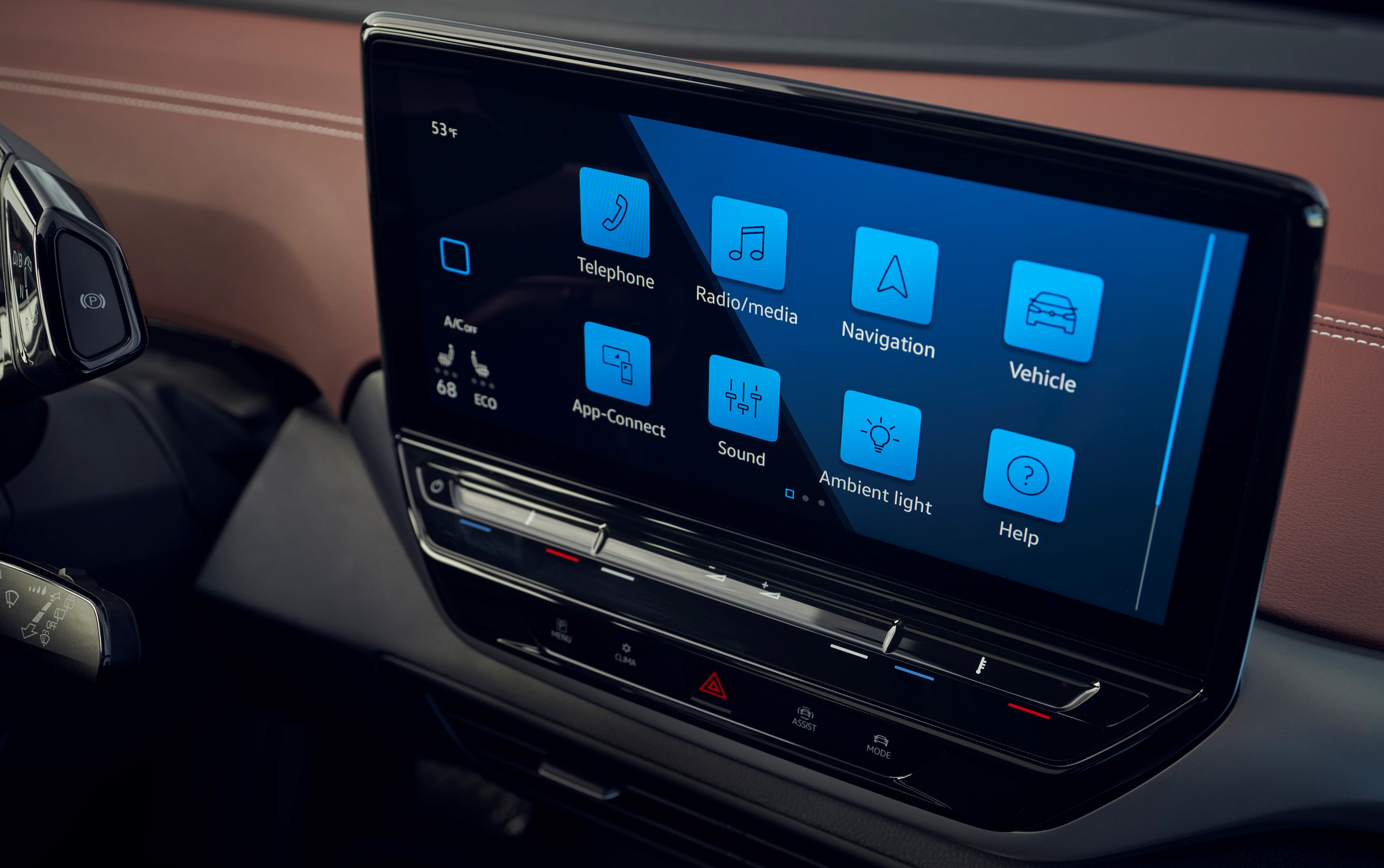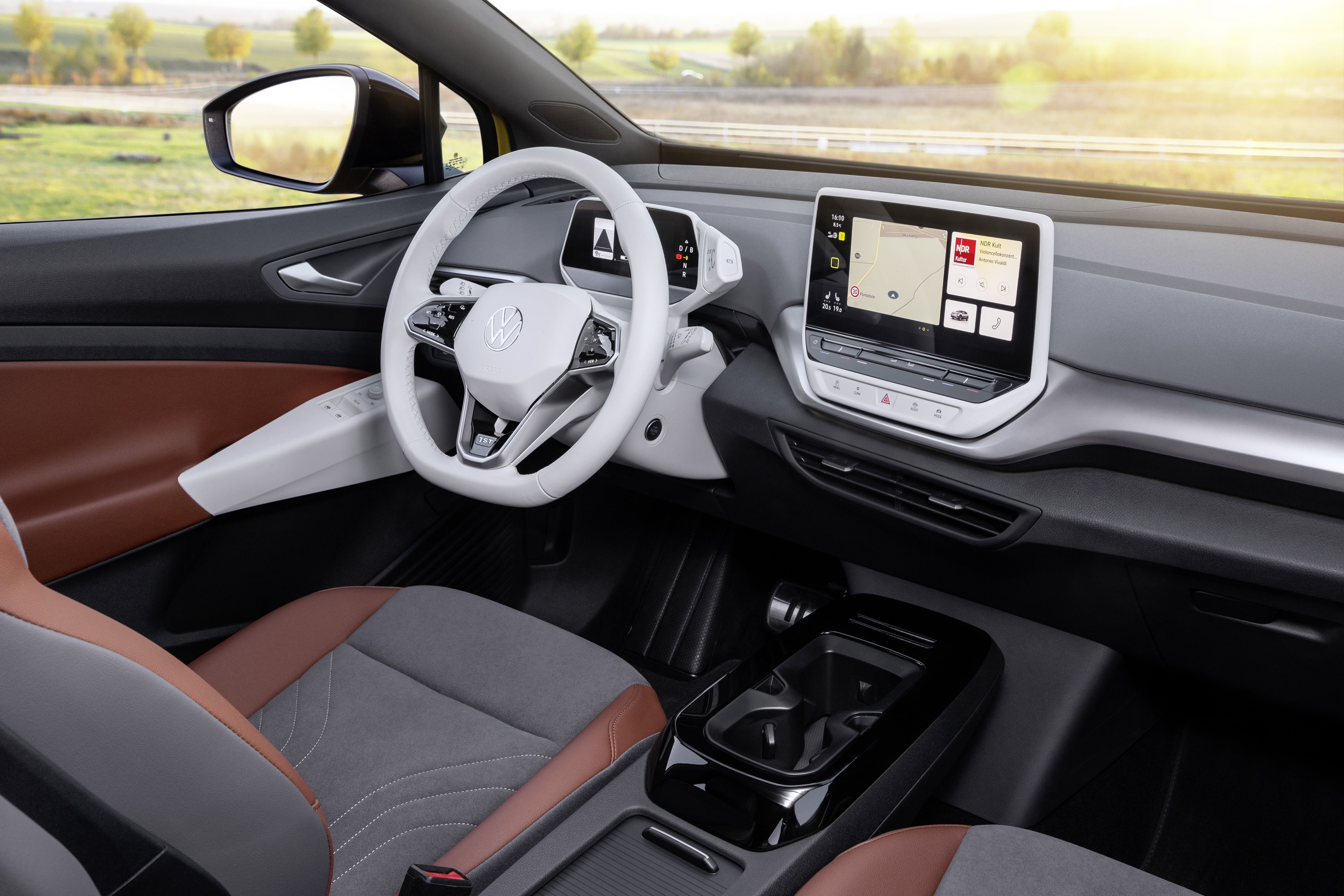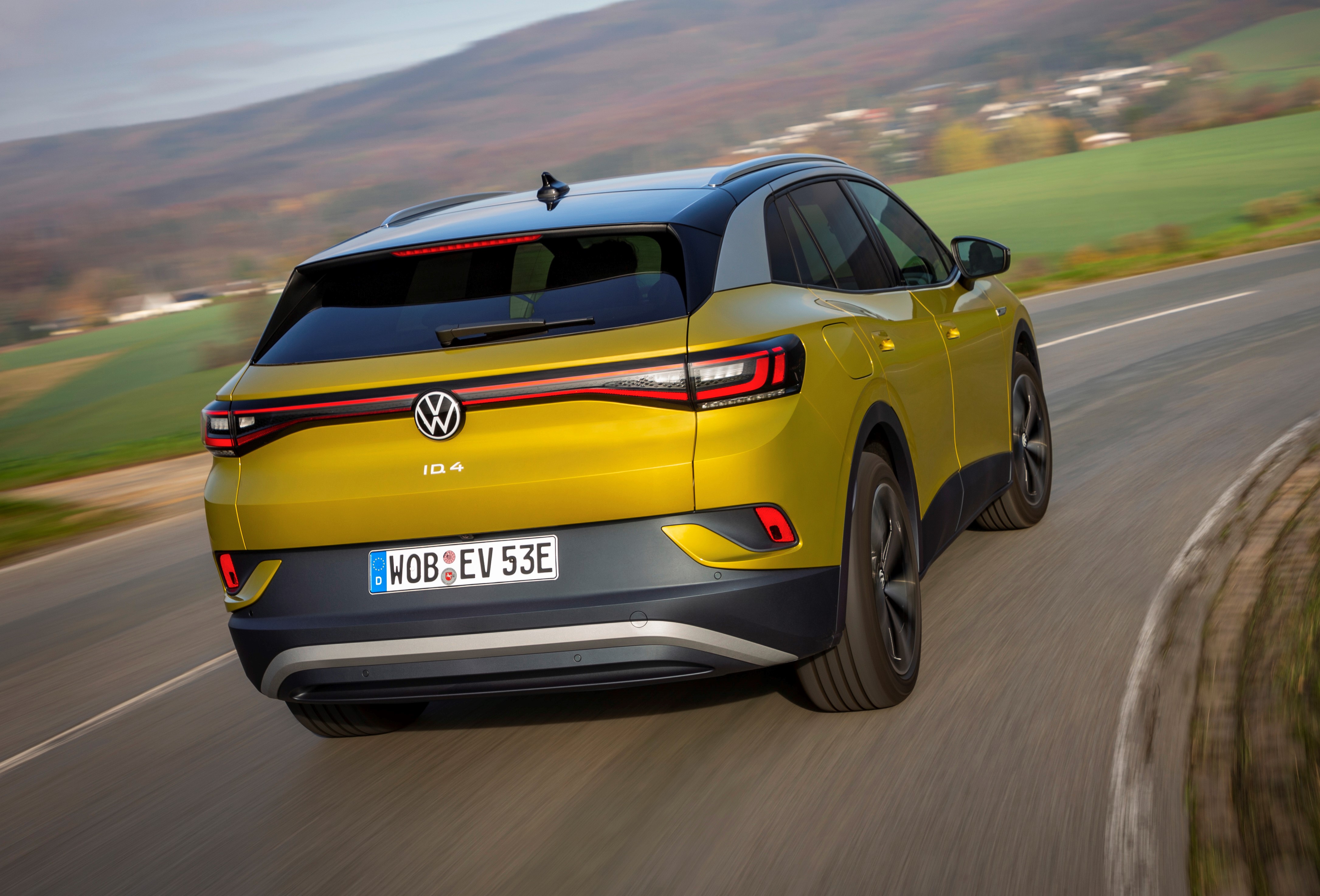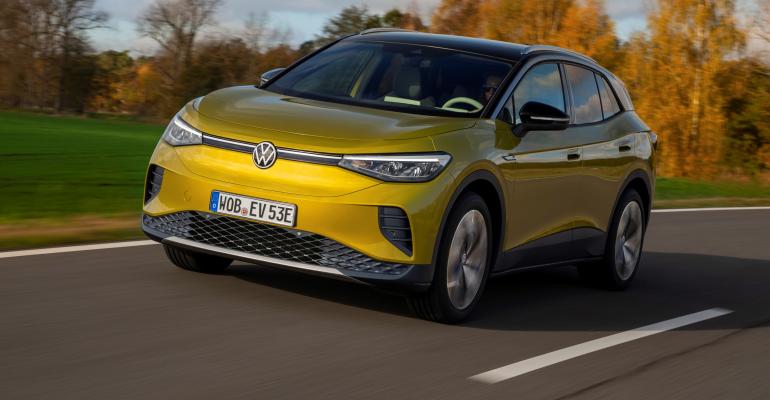The new ID.4 is where Volkswagen’s ambitions for global electric vehicle sales leadership really begin to take shape.
The CUV is meant to spearhead the German automaker’s entry into the fast-expanding North American EV market in 2021, taking aim at rivals such as the Hyundai Kona Electric and Tesla Model Y at a base price of $39,995.
Early models planned for North America receive the same single-motor/rear-wheel-drive setup as the early production example driven previously. However, a more powerful dual-motor/all-wheel-drive model that will usher in the new GTX performance car nomenclature also is set to be added to the lineup before the end of this year.
It’s a modern-looking car with short hood proportions unlike any existing Volkswagen CUV. Large wheelwells can accommodate rims ranging in diameter from a standard 18-in. up to 21-in.
At 180.5 ins. (4,586 mm) long, 72.9 ins. (1,852 mm) wide and 63.5 ins. (1,613 mm) tall, the ID. 4 is 4.7 ins. (119 mm) longer, 0.4 in. (10 mm) wider and 0.9 in. (23 mm) lower overall than the recently unveiled Volkswagen Taos. Its 108.9-in. (2,766 mm) wheelbase, meanwhile, is 3.0 ins. (76 mm) longer than that of VW’s new combustion-engine compact CUV.
Power for standard versions comes from a rear-mounted electric motor – the same synchronous unit used by Volkswagen’s first dedicated electric model, the ID.3 hatchback sold in Europe.
In Europe the ID.4 offers three differing outputs, starting at 146 hp and ranging through 168 hp to the 201 hp of U.S. models – all with the same 228-lb.-ft. (309 Nm) of torque.
Drive is sent through a single-speed gearbox attached to the side of the motor to the rear wheels, with an electronic differential providing a torque-vectoring function that varies the amount of drive sent to each individual rear wheel for improved traction and more neutral handling during all-out cornering.
The electric motor is fed by one of two different lithium-ion batteries; the 146-hp and 168-hp models come with a 52-kWh unit, while the 201-hp model for North America uses a larger 77-kWh battery – the latter of which is claimed to provide an EPA range of 250 miles (403 km).
The ID.4 comes standard with an 11-kW on-board charger, though it can support charging at up to 125 kW (below), allowing a 199-mile (320-km) extension in range within 30 minutes on a high-powered DC system, according to Volkswagen.
Despite tipping the scales at 4,683 lbs. (2,126 kg), the electric motor’s instant-on torque provides the 201-hp version of the ID.4 earmarked for U.S. sale with relatively brisk step-off qualities in either of its three primary driving modes: Eco, Comfort, Sport. At least up to 50 mph (80 km/h) or so.
Beyond this, its performance is challenged by a combination of its relatively modest reserves and increasing aerodynamic drag.

The driver can choose to alter the amount of regenerative braking via a pod-like gear lever mounted on an arm extending from the digital instrument display. “D” sees it freewheel with very light energy recuperation, while “B” offers one-pedal driving traits with noticeable energy harvesting and retardation on a lifted throttle, although not with the manual adjustment offered by some rivals.
Underpinning the new Volkswagen is a chassis that uses a combination of MacPherson struts (front) and a multi-link arrangement at the rear. All models receive passive dampers, though variable-rate dampers are available as an option on European versions of the new CUV and are highly recommended.
The ID.4’s dynamic properties are pleasantly fluid and quite responsive. This is particularly noticeable around town, where its 33.5-ft. (10.2-m) turning circle provides the 5-seater with outstanding maneuverability.

All-new HMI and central display screen in VW's ID.4.
Upping the pace reveals outstanding cruising qualities with low levels of wind buffeting, outstanding isolation of road noise and good longitudinal stability.
A low center of gravity provides the foundation for agile open-road handling distinguished by light but accurate variable-rate steering that benefits from the drive being directed to the rear wheels, its ability to vary the drive between each rear wheel for optimal traction and, on examples of the new CUV featuring variable damping control used by our test car, excellent body control.
Volkswagen claims the interior of the ID.4 (below) is as roomy as the larger Touareg. It is quite spacious up front, with ample head and shoulder room giving it a feeling of a much larger car. The rear seat, however, is set unusually high due to the packaging of the battery so, while it offers a good amount of legroom, headroom is rather restricted.

Trunk capacity is put at 18.8 cu.-ft. (531 L). Although it features a flat floor, the loading lip is set quite high, making it a stretch to load heavy items. Folding the rear seats away liberates 56 cu.-ft. (1,575 L) of space. For those interested in towing, VW claims a braked trailer capacity of 2,700 lbs. (1,226 kg).
The ID.4 is striking proof of Volkswagen’s ability to produce a truly world-class electric car. Granted, it may lack the outright pace of some rivals in its early single motor/rear-wheel-drive guise but in terms of handling, ride and refinement it is impressive.
It also serves up a notable array of digital and connectivity functions, displays a relatively high level of quality and, thanks to its dedicated EV platform and the packaging advantages it brings, is quite versatile.
Its biggest drawing card, though, is its sheer ease of driving, especially in urban conditions where it is agreeably nimble and responsive.

VW claims 250 miles of range for ID.4, 449 miles with range extender.






